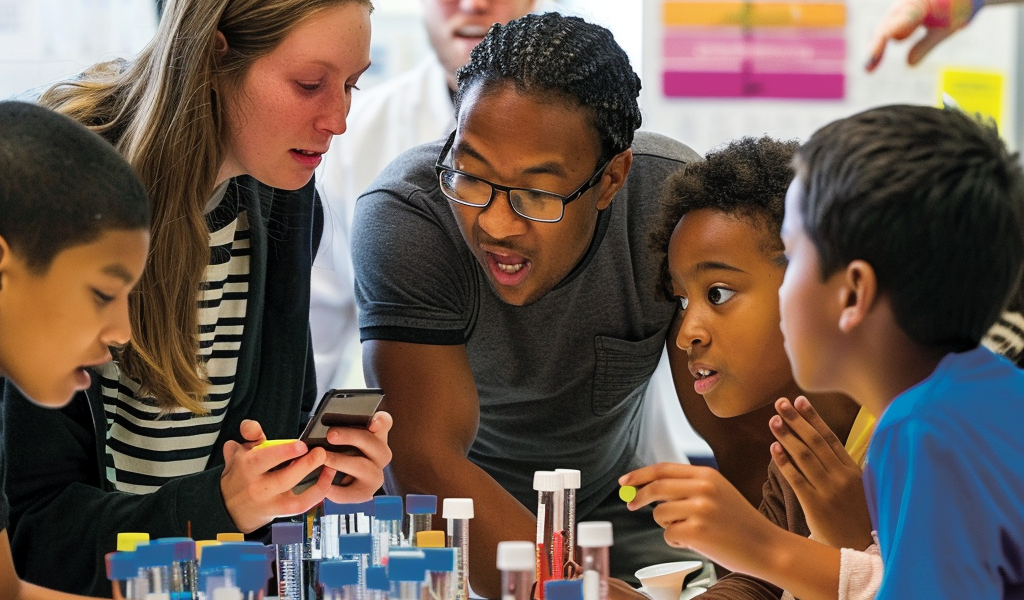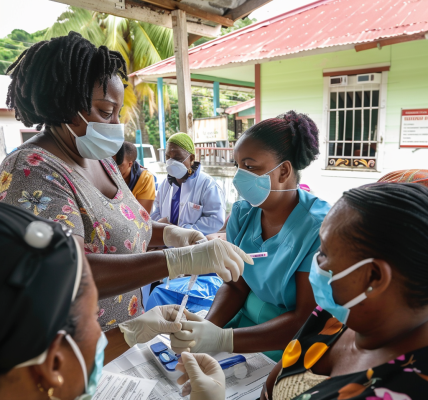Stanford’s CRISPRkit Revolutionizes Science Education with Affordable Gene-Editing Experiments
In a groundbreaking development for education in the sciences, a new kit called CRISPRkit has been introduced, making it possible for classrooms to conduct CRISPR experiments affordably and effectively. This innovative kit, developed at Stanford University, provides all the necessary materials for students to engage in gene-editing experiments at an astonishingly low cost of approximately $2 per kit, or around $40 for an entire classroom setup.
CRISPR technology has revolutionized biology over the past two decades, allowing scientists to cut, paste, and modify genes with unprecedented precision. However, while many students learn about the theoretical aspects of this powerful tool, hands-on experience has remained elusive—until now. With CRISPRkit, students can not only learn about gene editing but also actively participate in experiments that demonstrate the technology in action.
The CRISPRkit can be used in conjunction with a smartphone camera and the accompanying website, making it easy for students to analyze their results. Although the kit is still in the early stages of distribution, a recent publication in Nature Communications highlights its potential to democratize access to advanced biological techniques in educational settings. The paper was authored by a team led by Stanley Qi, an associate professor of bioengineering, along with lab members Matthew Lau and Marvin Collins.
Matthew Lau, who played a key role in the development of CRISPRkit, expressed the team’s vision: “Our goal is to democratize biology. The demand is there—this could serve as a model to bring these kinds of opportunities to classrooms.” The initiative aims to bridge the gap between theoretical knowledge and practical application, allowing students from diverse socioeconomic backgrounds to experience the excitement of modern biology.
The inspiration for CRISPRkit traces back to Lau’s own journey. As a high school student, he became involved with the Qi lab after attending a summer camp at Stanford. His experience at a biotech conference in New York in 2018, where he encountered an expensive educational kit, ignited the idea of creating a more accessible DIY alternative. The team decided to focus on CRISPR technology, which was already a significant area of research within Qi’s lab.
Marvin Collins, who joined the project as a sophomore, emphasized the importance of accessibility in science education. He stated, “We wanted to make it as accessible as possible, so kids from all different socioeconomic backgrounds could get exposure to exciting technologies that are making waves in bioengineering and medicine—and hands-on experiments give them experience in what science is all about.”
The CRISPRkit is designed to utilize chromoproteins—proteins that exhibit vibrant colors under visible light. The primary experiment involves using CRISPR to turn off these chromoproteins, providing a visually engaging way to learn about gene editing. The colorful aspect of the experiment is expected to capture students’ interest, making the learning process both fun and educational.
As the team continues to refine the CRISPRkit, they are optimistic about its potential to transform science education. The kit not only offers a practical introduction to genetic engineering but also encourages critical thinking, problem-solving, and hands-on learning—essential skills in today’s scientific landscape.
In addition to the educational benefits, the CRISPRkit represents a significant step towards bridging the gap between advanced scientific research and classroom learning. By providing students with the tools to conduct real experiments, the kit empowers the next generation of scientists and innovators.
With CRISPRkit, the future of science education looks promising, as it opens doors for students to explore the fascinating world of genetics and biotechnology. As more classrooms adopt this innovative approach, the hope is that a greater number of students will gain the skills and knowledge necessary to thrive in an increasingly complex scientific landscape.
As the initiative progresses, educators and students alike are eager to see how CRISPRkit will enhance the learning experience, making cutting-edge science accessible to all. The implications of this project extend far beyond the classroom, potentially inspiring future breakthroughs in biotechnology and medicine.
With a commitment to inclusivity and engagement, the team behind CRISPRkit is paving the way for a new era of scientific education, one where every student can participate in the excitement of discovery and innovation.





